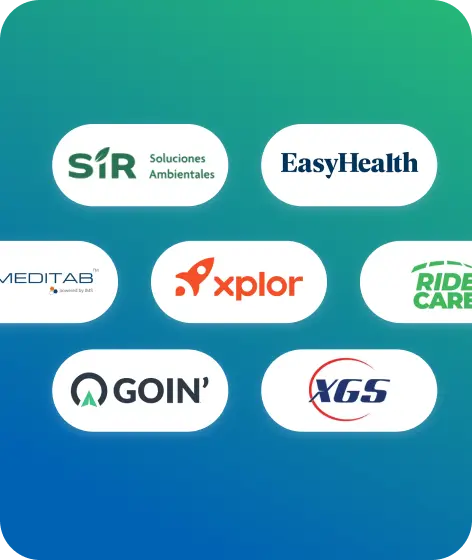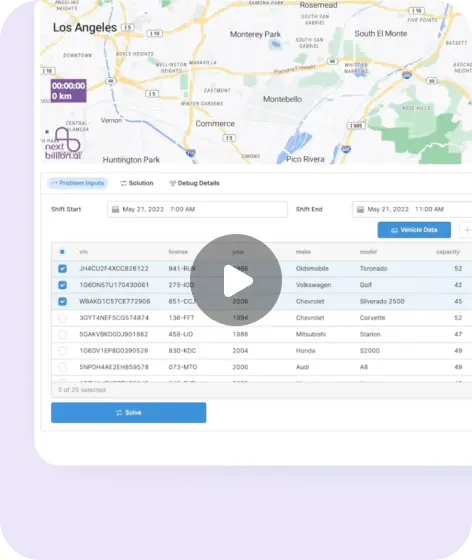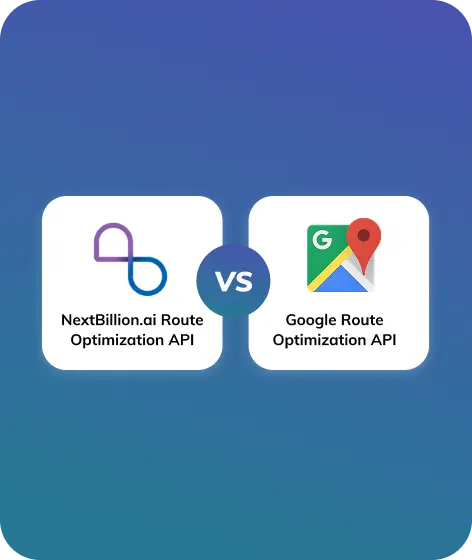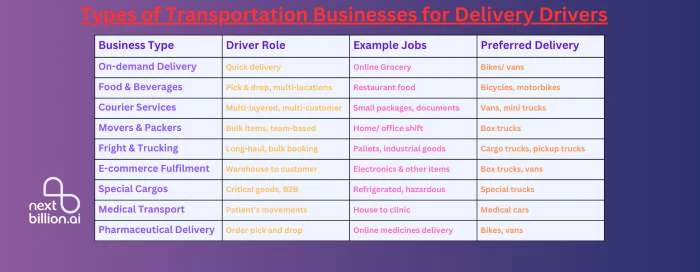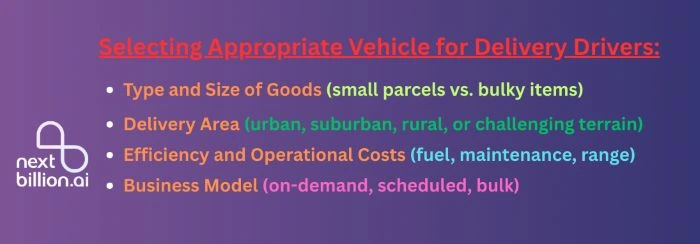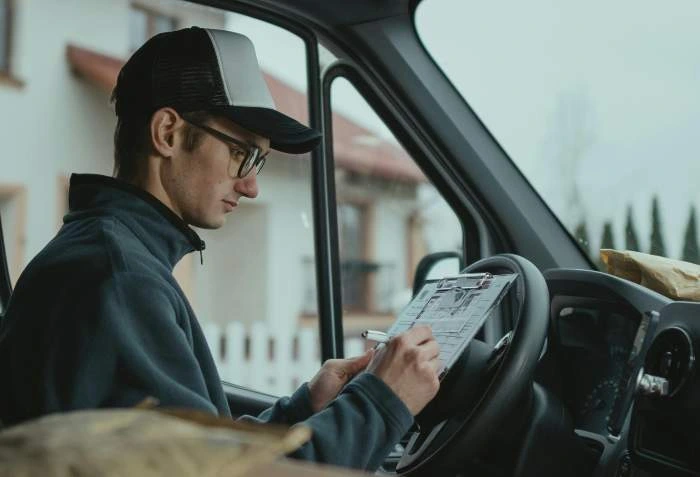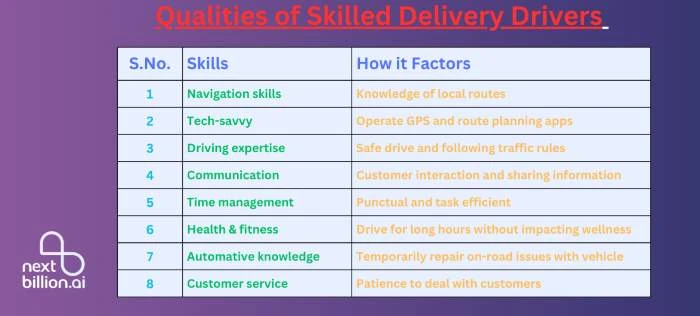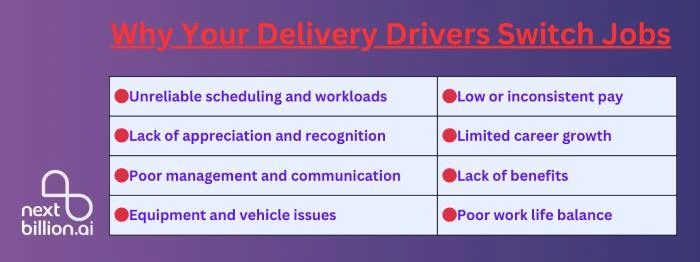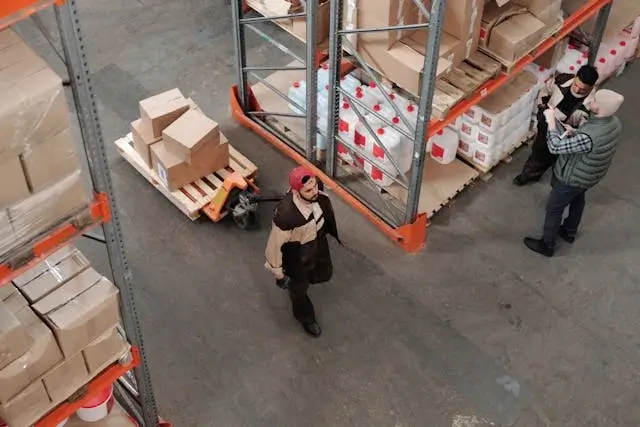
Table of Contents
With companies outreaching their trade to the far-off locations, it is the delivery drivers that play a vital role in job completion. All market segments, whether B2B, B2C, or D2C, rely on transportation, a process that smart auto-driven vehicles have yet to automate. Therefore, delivery drivers are essential for the fundamental operations of your business.
The process of hiring delivery drivers differs from other job segments. The work specifically demands the person’s accountability. Therefore, you should know the variable requirements with respect actual job role. You should also stay updated with the latest technology developments that can effectively assist them in the field.
We’ll guide you through the steps to recruit suitable candidates who can drive your delivery vehicles and execute transportation. But let us begin with understanding the critical factors in hiring a delivery driver.
Read: Enrich Your White Glove Delivery Services with NextBillion.ai API
Criteria for Hiring a Delivery Driver
There are multiple factors that should necessarily be considered before recruiting a driver for the transportation of goods and services. Why is it important?
Because there are different categories of businesses that require auto mobilists with specific skills. Such conditions are often relevant when handling goods of a specific category. More than that, the company needs to recruit trained drivers who can perfectly handle the particular vehicle designated to them.
Types of Logistics and Transportation Businesses for Skilled Delivery Drivers
Business expansion with innovative ideas has created a vast range of services in the delivery and transport segment. The road networks are now covering every corner, whether it is a mountain peak or a deserted zone. Depending upon the individual or business requirements, different companies are serving the delivery needs
🔹On-demand delivery services: These delivery services are based on online orders taken from multiple sectors and usually serve the local area. Drivers pick up orders from locations such as retail stores, which are likely the closest to the delivery address, and complete the deliveries within a specified timeframe.
🔹Food and beverage delivery: It can be ready-made cuisine from a nearby restaurant taking online orders. The customers from households or even offices can make the order and receive it within a short period of time. The food delivery agents pick up the order from the desired location and navigate through the traffic at their pace to deliver the food within a short time.
🔹Courier services: It is similar to postal services where individuals willing to send gifts or goods to another person from the same or different city/ country can access the services.
The delivery drivers at each hub station pick up all such packages coming from different locations. They now use route planner tools to transport the boxes to the given address. These drivers usually work in an allocated region for courier delivery.
🔹Movers and packers: General households and organizations call movers and packers for shifting the belongings to a different location in situations like job transfers or deciding to establish work in a different location.
They can ask for multiple small or big-sized trucks for efficient load management, and drivers need to deliver the packages safely to a fixed location.
🔹Freight and trucking: It is the transportation of large-sized goods or bulk shipments over long distances. Training for long-distance travel and handling large cargo trucks on the road is essential for delivery personnel.
🔹E-commerce fulfillment: One of the most popular transit businesses that depend on delivery service is the e-commerce sector. They depend on delivery drivers to run the business successfully. Multiple such drivers pick up the orders from the warehouse of the region and deliver them to the customers in the respective area through optimized route plans.
🔹Special cargos: These vehicles are facilitated with equipment like refrigeration, carrying capacity of brittle elements or hazardous chemicals, etc. Hence, the drivers should have the skills and experience to manage such vehicles for safe and secure transport.
🔹Medical transport: Not just delivering medical devices, but transporting people with health issues to the clinics or hospitals is considered medical transport. It requires drivers with special training for safe and efficient transit of any individual. They can pick up the person from their set location and help them move back and forth to the hospitals.
Also read: A quick guide to starting a Medical Transport Business and Requirements for NEMT Provider
🔹Pharmaceutical delivery: Online medicines are getting popular now. People tend to upload the prescription and order online to applications. The delivery agents work end to end for task completion.
Types of Vehicles for Delivery Drivers
Hiring a delivery driver is not just about driving skills and task execution. Factors like product size, category, or delivery location also impact the choice of vehicle suitable for your business. Here is a list of the most used delivery vehicles.
Read how you can manage load optimization in delivery vehicles with NextBillion Route Optimization API
🔹Two-wheel bikers: Riders prefer two-wheel drives like bicycles and motorbikes for local deliveries. It is suitable for food deliveries or small packets with short-distance traveling, specifically in dense areas. The ride is time-saving and cost-effective.
Check how you can reduce last mile delivery costs using AI.
🔹Delivery vans: Delivery vans can cover short distances within the radius of urban settings and connected outer regions. It can carry multiple boxes or bulk items from factories, like milk, water bottles, etc., for daily transits.
🔹Pickup trucks: These are mini open-bed trucks for carrying heavy and over-sized loads usually in rough terrain, and booked for single destinations.
🔹Box trucks: These are best for carrying bulk orders between two destinations, such as warehouse to hub stations, shifting, or raw products from a factory to a retail center. They deliver end-to-end for long-haul shipments.
🔹Cargo trucks: These trucks are used for long-distance transport of goods and have a large capacity to carry chunks of loads, usually from a big warehouse or factory.
🔹Medical vans: Usually ambulances in different sizes or cars for patient transport from residence to the clinics or hospitals
🔹Special vehicles: Such vehicles or cargos are specifically designed for carrying large equipment, hazardous items, or products requiring refrigeration.
Depending upon the requirements for specific products and the capabilities of the driver, the company can deploy a range of vehicles from the above categories.
Different Modes of Hiring Delivery Drivers
You can recruit the delivery agents through multiple channels and not just depend upon the direct recruitment methods. Let’s discuss the different modes of recruiting skilled drivers for a certain position with specific considerations and advantages.
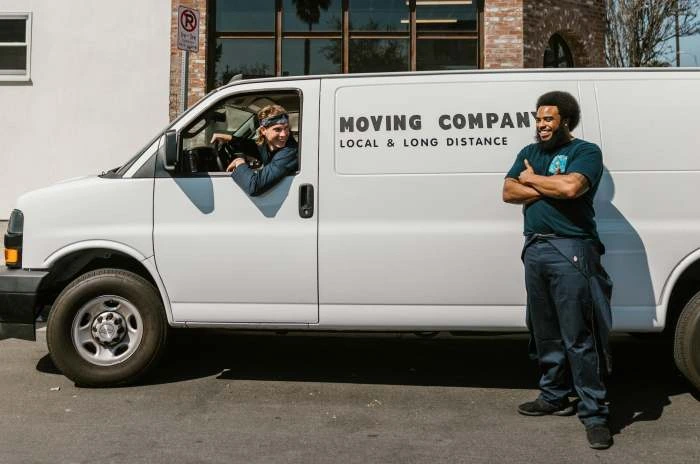
🔹In-house staff: Businesses like e-commerce platforms, courier agencies, or factory transportations that need to keep control over their branding can hire permanent staff for the delivery process.
🔹Independent contractors: Small- or medium-sized companies with a lesser frequency of deliveries can connect with drivers on a contract basis, as they do not have to pay salaries without justified work. This allows the workers to use their vehicles and get payment per task completion.
🔹Third-party staffing: New organizations in the product-selling segment and generating orders from different locations had to depend on third-party agencies to manage the deliveries. They can connect with logistics companies to hire trained drivers to fulfill their orders without getting into the necessities of employee management, insurance, etc.
🔹Gig workers: Food chains, restaurants, or retailers can hire gig workers to give their services, especially during the peak times. This model is usually applied in local or closed-area delivery, and the drivers get paid on a per-task basis.
🔹Regulated delivery drivers: Institutes providing critical products, like dangerous materials or products with sophisticated handling, can hire well-trained delivery drivers to handle transportation tasks.
Depending upon the business, budget, and volume of transits, you can opt for the respective mode of hiring the delivery professionals.
Where Should You Look for Hiring Delivery Drivers?
It is certain that your business requires skilled and reliable delivery drivers. For that, you need to look for the most suitable candidates from multiple platforms. Below are the prominent methods by which you can recruit delivery professionals.
🟢Job portals: You can upload the job opening for delivery driver in popular job portals such as Indeed, Glassdoor, and any other site that is relevant in your area. It is a great way of finding suitable candidates from a large pool. You may target them based on specific location, experience, and skills.
🟢Social media: LinkedIn, Facebook, Instagram, etc. are being used by majority of eligible candidates. You can upload a post about the job opening or use the career section to create job application. As the post goes viral, you will start getting a bunch of applications for the delivery driver role.
🟢Print media: However, job vacancy advertisements in newspapers are not very popular these days; it may still prove effective in targeting candidates from a local region. You can publish a brief about the job description with a company logo and ask experienced professionals to appear for the screening test.
🟢References: Potential candidates can apply for the role along with a reference from a staff member working full-time in the company. Candidates having references are usually preferred by the employer due to the ease of the verification process and other reasons.
🟢Collaboration with institutes: You can partner with driving schools to attract genuinely trained drivers. These centers can provide well-versed drivers with knowledge and legal licenses.
You can use multiple platforms to advertise the vacancy at your organization. This will ensure more profiles for shortlisting.
7 Stages in Hiring Expert Delivery Drivers?
The process of recruiting drivers for making deliveries is different from traditional office or field marketing jobs. It requires the person to have driving skills along with the capacity to drive all day without getting stressed.
We have added the step-by-step procedure to initiate the recruitment drive for the delivery driver role. You can follow the guidelines to generate perfect profiles of candidates and evaluate them to fill the vacancy.
⭐Step 1. Brief Analysis
Write down a rough analysis about the total number of vacancies in the organization. It helps in documenting the job description and keeping transparency about the overall workload. Consult the logistics department about the need for any particular number of riders, considering all the possible routes and shifts.
Depending upon your business category, do you need the drivers to possess any specific skills? Will it be a permanent, contract, or third-party-associated position? Briefly outline the job responsibilities and the industrial experience needed to apply for this position.
Additionally, you should prepare a practical assessment test in a controlled environment to evaluate the candidates’ abilities in handling specific types of vehicles.
⭐Step 2. Job Description
Now frame a job description beginning with a short description about your company’s values, policies, and delivery expectations. Ask the candidate to visit the website for exact knowledge about the category of items to be delivered. Also give a brief description of who your ideal customers are, whether they are industries, retail stores, offices, or households.
The job details should include the required years of experience with particular skills and educational qualifications for the candidate to fill this position.
You can also share the range of salary offered and how to apply for the role, whether it is through an email, Google form on the website, or directly from the chosen portal. Ask the candidates to share their resumes, experience details, and short answers to the questions included in the application.
⭐Step 3. Job Posting
Once you have created a formal job description, research relevant platforms to find suitable candidates for the role. You can publish the job over multiple job portals, social media platforms, print media, or other means, which spreads the news about such vacancies to the deserving professionals.
While you may choose Indeed or LinkedIn for candidate search, they may not serve the effort because they are more suitable for IT, HR, or marketing-related jobs.
⭐Step 4. Review Job Applications
You will receive many job applications. Shortlist the genuine profiles after reviewing their skills, experience, age, and other qualification factors that can impact their performance.
Connect with the selected resumes to schedule an interview round as per their availability at the location.
⭐Step 5. Interview the Candidates
Prepare multiple questions to assess the abilities of the drivers. Ask them about their background, experiences, types of vehicles they have driven in the past, whether they have taken institutional training from a reputable place, salary expectations, commitment, and other related questions.
Ask them about their technical education and ability to understand navigation apps on Android/ iOS devices. Most of the logistics companies provide route planner apps for the drivers to assist and track their movements on the road. Hence, the candidate should be skilled to operate these devices.
Read about 5 best route planner apps for Android.
⭐Step 6. Practical Skill Test
Because the job involves a lot of responsibilities on the road, considering the deliverables and the vehicle, it is necessary to conduct a practical skill test. This would help you to know more about the driver’s potential in learning new skills, and how they handle challenging situations.
Select suitable profiles from the interview for the driving test. And check how they drive the specific vehicle type. Test them under real-time traffic conditions, and analyze their navigation skills. They should drive professionally in genuine speed by following the traffic rules and can safely park the vehicle with perfect observation.
The drivers should be tech-savvy to operate digital devices and take instructions from the application. Test their skills in vehicle maintenance and knowledge about different parts. They should be physically fit to manage heavy loads, whenever required.
⭐Step 7. Background Check
While shortlisting candidates for the interview and skill test levels, you must also do a background check to avoid future issues.
Check the legal documents of the candidates, specifically their driving licenses. You may also ask for their health report and police verification, and alternatively, you may ask for a reference as well.
The above stages of recruiting delivery drivers are crucial for all the organizations offering transportation services. Once you have finalized the required profiles to join your team of drivers, proceed with the training and onboarding sessions.
Onboarding New Delivery Drivers in the Company
As an organization, you should follow a systematic process for onboarding fresh recruitment of delivery drivers. It isn’t suitable to directly integrate them into the role or hand-over the responsibilities. Assign them a proper orientation program to let them become aware of the company’s values and services
✔️Documentation: Finish the paperwork related to the background check, verification, insurance, employee code, etc.
✔️Introduction: Give detailed information about your company’s policies, products, and work culture.
✔️Vehicle details: Train the drivers about the vehicle’s features and components. They should know about the toolbox, first-aid kit, and other operations.
✔️Routes: Inform them about the usual routes to be followed in the considerate area covered under their duty. Familiarize the drivers with the details on the map, as well as on the road.
✔️Customer service: Train the drivers how to communicate with the customers. Smooth conversation positively affects the delivery choices of the customers and keeps the brand message intact.
✔️Tools & Technology: Allot the digital devices to the drivers. Provide them training sessions to get them aware about the features of the tool. Give instruction to follow the route plans, how to edit the routes, time windows, how to upload delivery information, etc.
Job Switching of Delivery Drivers: How to Retain Them?
Job switching is a universal problem for business organizations. While it is an individual’s decision to leave a company for professional growth, but it does impact the company’s performance by losing experienced staff.
Companies spend a considerable amount on training the delivery drivers, who understand the responsibility in due time and steadily complete the task.
There can be varied reasons for the delivery drivers to exit and join a new firm. Some employees switch for enhanced compensation and career growth, while others may consider work-life balance and lack of appreciation in the role.
Often there is no perfect reason for a job switch. The drivers are sometimes not job satisfied due to the unproductive work environment. It could be due to long working hours, un-maintained vehicles, or lack of technical assistance on the routes that is causing stress.
These are a few notable measures that you can take to retain the delivery drivers from job change.
✨Keep reviewing the payouts, which should match the market rate, and add performance bonuses, insurance, paid leaves, incentives, etc. in the total salary.
✨Fasten the load management process to save the driver’s standby time.
✨Implement a clear communication channel to let them share genuine issues with the department.
✨Ensure well-maintained vehicles run on the route to avoid sudden breakdown or other driving issues.
✨Provide route plans to ease the delivery process. Drivers having road assistance can finish the tasks within the scheduled time.
✨Drivers should have an integrated self-operative mobile app on their device. It delivers the necessary technical assistance related to the route maps, delivery stoppages, task postponements, etc.
✨Observe their potential and create career growth opportunities.
✨Instead of discrediting the drivers, recognise the on-road issues and resolve failed delivery attempts.
By addressing these key factors, you can retain the experienced drivers and reduce the costs of hiring new delivery drivers.

Enhance Work Efficiency of Delivery Drivers with Advanced Technology
The delivery agents had to spend long hours on the transit routes. While the real-time conditions such as weather, traffic, or road conditions have their own challenges, sometimes the delivery assignments are also quite stressful.
It is hectic to manually manage the delivery points. Drivers are also expected to choose the best route that covers all the stoppages in a sequence to save transit time with the lowest fuel consumption.
Inefficient performance by delivery agents adversely affects the company’s finances, workload, reputation, and branding value. And the worst part! They start losing experienced staff. The solution lies in leveraging the advanced technological systems which can streamline.
The NextBillion route optimization API is an effective software that works on location technology. It integrates with your transport management software, telematics, or any CRM database with JSON or CSV files.
The tool automatically fetches the order details for a specific area and creates an optimized route plan for the delivery drivers. They can access the plan on the Driver’s app linked to the software on the digital device, and follow it or edit in between the assignments.
The multifaceted features include task management and tracking deliveries, convenient load distribution, avoiding route overlaps, vehicle categorization, and adding new orders during an ongoing assignment. Exploring the tool creates immense possibilities of providing on-road virtual assistance to the drivers and keeping them connected to resolve the issues instantly.
About Author
Nitesh Malviya
Nitesh Malviya is a research-oriented professional with a background in Computer Science & Engineering. He served for 7 years as a software consultant and wrote passively in the tech niche before becoming a full-time technical writer.

